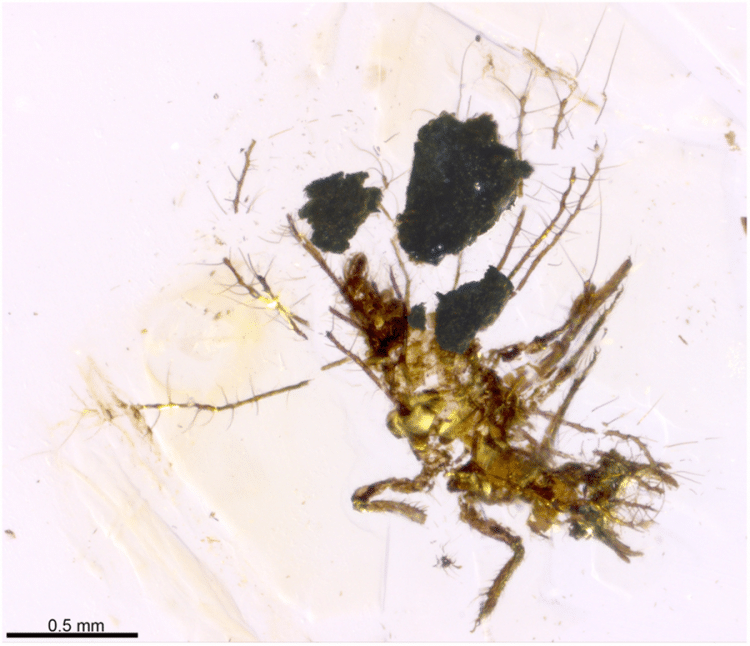Crafty Camouflage: new research on 130 million year old lacewing by Ricardo Pérez-de la Fuente
20 Nov 2018

Research by Dr Ricardo Pérez-de la Fuente (Junior Research Fellow in Palaeobiology), about a tiny insect larva preserved in amber that collected bits of soil for camouflage and protection 130 million years ago in Lebanon, has been published in Scientific Reports this month. Ricardo has also written about the discovery of the fossil green lacewing larva, named Tyruschrysa melqart, for the Oxford University Museum of Natural History blog, More than a Dodo.
In the blog post, he describes some of the different types of camouflage adopted by animals, including one approach which “involves collecting diverse materials from the environment and incorporating them on the animals’ bodies in order to better blend with the surroundings. This is known as debris-carrying, trash-carrying, or decoration, and it can be found across a wide variety of animals including sea urchins, gastropods, and arthropods, such as decorating crabs, or sand- and mud-covering spiders.”
The new fossil differs from modern relatives because instead of short ‘bumps’ with setae (velcro-like ‘hairs’) on their backs they have relatively long ‘tubes’, giving them a bizarre appearance. “These tubes have setae with mushroom-shaped endings of a kind never seen before in extinct or living green lacewing larva species,” explains Ricardo. “The mushroom-shaped ending is a special adaptation to anchor debris, which in the case of Tyruschrysa melqart are fragments of soil.”
“Green lacewing larvae have been gathering debris to camouflage and protect themselves for about 130 million years, giving rise to the different body adaptations we see amongst these fascinating tiny collectors,” he adds.
You can read the full blog post here and find the paper, ‘A soil-carrying lacewing larva in Early Cretaceous Lebanese amber’ by Ricardo Pérez-de la Fuente, Enrique Peñalver, Dany Azar and Michael S. Engel as open access in Scientific Reports.
Categories
Related News

Teddy Hall’s Professor Carly Howett’s Research Suggests Saturn’s Icy Moon May Host Life
10 Nov 2025
